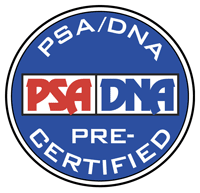American inventor, actor, and entrepreneur (1811-1875) known for his important improvements to the sewing machine, who founded the Singer Sewing Machine Company. Incredibly rare ALS signed “I. M. Singer,” six pages on three leaves, 5 x 6, May 6, 1863. Remarkable handwritten letter in pencil, signed at both the head and the conclusion by Isaac M. Singer, discussing improvements to the sewing machine. In part (spelling and grammar retained): "I send you a box containing…a gage to gather one pise of goods on to an other pise. This gage is held on the mashine by the same screw that holds the heming gage…in plase between the presser on the feed dog the goods to be gathered, in plases next the feed and unde[r] the gage and the pise that is not to be gatter is placed between the top of the gage on the under side of the presser. Edge of the gage must be one sixteenth from the nedle to make it work well. The goods must not be held by the operater save to guid[e] the direction of the seem. The gage will gather more or less acording to the preshure put upon the presse pad in the common way. I send some samples done by the gage in the same box…
I send you some samples done by the arm machine with the new thread controleter…the users of those attend mashines seem satisfied you will observe that the stishing on the top is much better than we have ever done before and this is aiming entirely to having the point of the shuttle move in the same direction that the seem moves that is up the arm both the shuttle and the seam. By this means the shuttle masters the needle thread but the shuttle running in an opesite direction from the seem alowes the the needle thread to master the shuttle thread and therefore the stish has always been more loose on the top than on the bottom the samples are the opesite this having the shuttle move forward through the loop in a line with the progress of the seem has the same efect on the shuttle thread that it has when the feed is transverse the seem, more this seeming mistake has proved that the old plan was and is an error…
A new way to put on the part and the hemmer it will cost no more than it dose now. As they can boath be made from one pise pushed out of the solid and then struck up this make more room under the heming gage or if any other kind of gage or preasser is required it is easy put on the forms before being bent. [Here, Signer sketches diagrams of the presser and hemming gauge]…I will send one of the arm mashines soon as attend or repaird. And soon with a new feed I have no means for making patrons. The arm should not be made any larger at the end for the first six inshes from the other end three insh above the needle…the arm of the dreaddle that the putman is atashed to is in some of the transverse mashines 10 insh and in some 6 insh. Now I wish them all to be made 8 insh and the driving wheel left as it is now 2 insh from center to center thes alteration are to be made as soon as conveint. I have just aplied for a patent here in England containing 28 new devises with 40 old claims. The fountain head has not dried up yet." In fine condition, with light edge toning, and a stray ink stain, to the first page.
Isaac Merritt Singer revolutionized the sewing industry with his innovative improvements to the sewing machine. In 1851, he patented a design that significantly enhanced the machine's efficiency and usability, introducing a foot pedal for hands-free operation and a straight needle that moved up and down rather than side to side. These advancements made sewing machines more practical for domestic use and set the stage for mass production in the garment industry.
The invention quickly gained popularity, and by 1856, Singer's company had become the world's largest manufacturer of sewing machines. Seeking to expand his business internationally, Singer moved to England in the early 1860s. His relocation to Europe allowed him to tap into the burgeoning markets there, further solidifying his company's dominance on a global scale. Singer's entrepreneurial spirit and inventive genius left a lasting legacy, transforming textile manufacturing and home sewing practices worldwide.

This item is Pre-Certified by PSA/DNA
Buy a third-party letter of authenticity for
$500.00
*This item has been pre-certified by a trusted third-party authentication service, and by placing a bid on this item, you agree to accept the opinion of this authentication service. If you wish to have an opinion rendered by a different authenticator of your choosing, you must do so prior to your placing of any bid. RR Auction is not responsible for differing opinions submitted 30 days after the date of the sale.